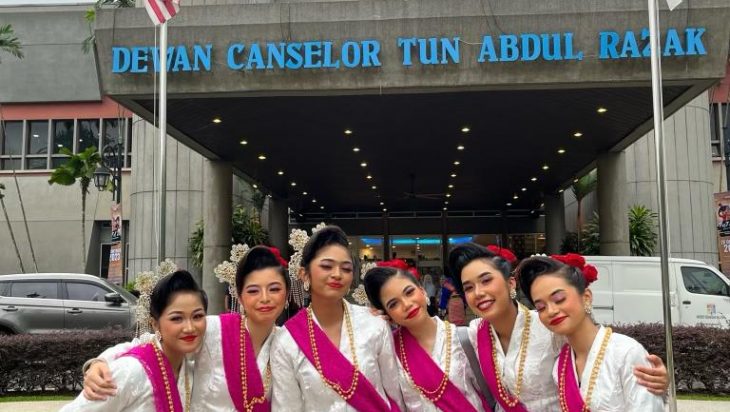Liberation, not provocation: Tales of the Kebaya

By Damia Qistina, Putri Nur Nadyne and Hani Arissa
The kebaya, a physical embodiment of great history and powerful influence with the help of women in Southeast Asia. It is a timeless piece of traditional upper garment that carries the essence of numerous cultures.
Though this blouse is meant to hold immense significance ethnically, a handful of our society turns a blind eye and chooses to focus on its ‘suggestiveness’. In this age and time, there is a widespread stigma of the kebaya being an inappropriate attire to wear at functions or events.
Its modesty is often being questioned as it is tight-fitted and some can be visibly sheer. But will this disregard the important history behind this traditional apparel?

The thread that ties us all
Every woven thread of the kebaya represents the different impacts that have been sewn into history. In Indonesia, the kebaya is a symbol of the emancipation of women and is profoundly connected to the famous 19th century ‘proto-feminist’ Raden A. Kartini.
By the 1920’s, the kebaya was also wholly associated with Indonesian nationalism, in favour of the nationalist struggle for independence.
The kebaya portrays the hybridity of rich cultural heritage in various diverse communities entwined with one another.
Delicate lacework and designs strongly influenced by the Dutch and the Eurasian as well as intricate embroidery illustrating roses and swans thanks to Western influences. Not to mention long tunics from Portuguese clothings that lead to many versions of the kebaya.
Fashion forward
Like any other fashion trend, the kebaya moved with the times and evolved beautifully throughout the years. A knee-length, long-sleeved blouse with a V-shaped cut neckline, Kebaya Panjang was mostly influenced by Portuguese designs in Malacca during the 16th and 17th centuries.
Conversely, Kebaya Buntak, a short kebaya made to emphasize the figure, was mainly popular among younger women and introduced in the 1920’s. Seamed with gorgeous lace or batik, Kebaya Bandung was adopted by the Nyonya during the 50’s.
Named after the town of its origins in west Java, the close-fitted blouse could frequently be seen being worn by Malay film stars in classical Malay movies.
In the current times, contemporary wear of the kebaya includes bellbottomed sleeves and lace entirely covering the kebaya as well as the kebaya being paired with jeans as accustomed to the usual kain batik.

An art form shaded by scandal
The passing of time brings the passing of trends, and Malay women tend to gravitate more towards airy, loose clothing both to enable labor and adhere to religious obligations to not reveal a woman’s figure.
Meanwhile, the kebaya was stark in comparison, the form-fitting top made with sheer cloth paired with a wraparound sarong that could flow with the wind.
These days, the kebaya is described as too eye-catching to some, as if wearing a piece of clothing would mean that you were as good as selling yourself.

But the kebaya is more than a piece of clothing. It’s a symbol of our culture, decades of years of women’s history woven in lace and fabric.
Though translated to many variants through Peranakan, Javanese, Balinese and Thai cultures, the distinct silhouette and V-neckline is what unites these cultures under one garment.
The kebaya is not just a piece of clothing— but a symbol of unity from women all across Southeast Asia, no matter their age, size or religion.



